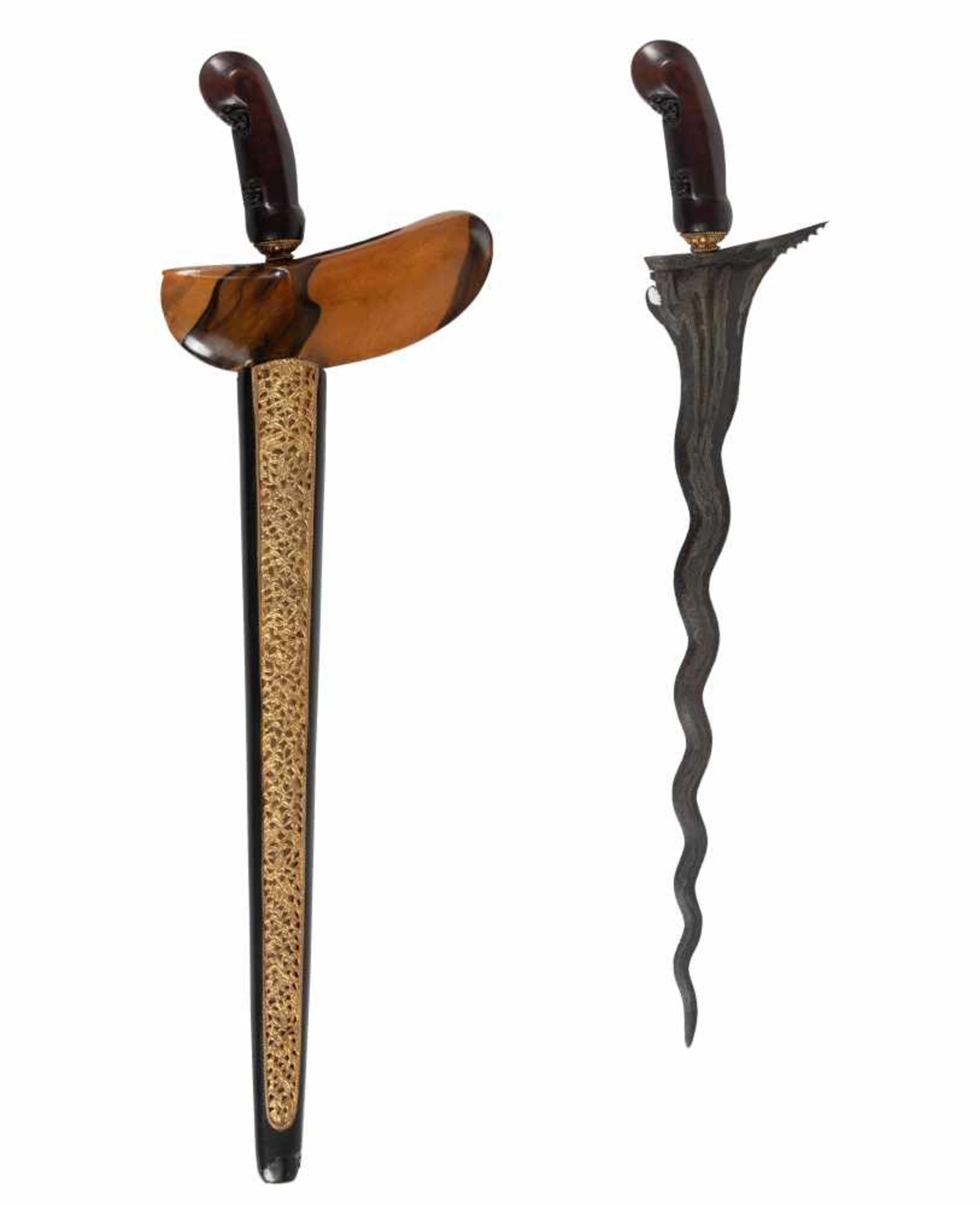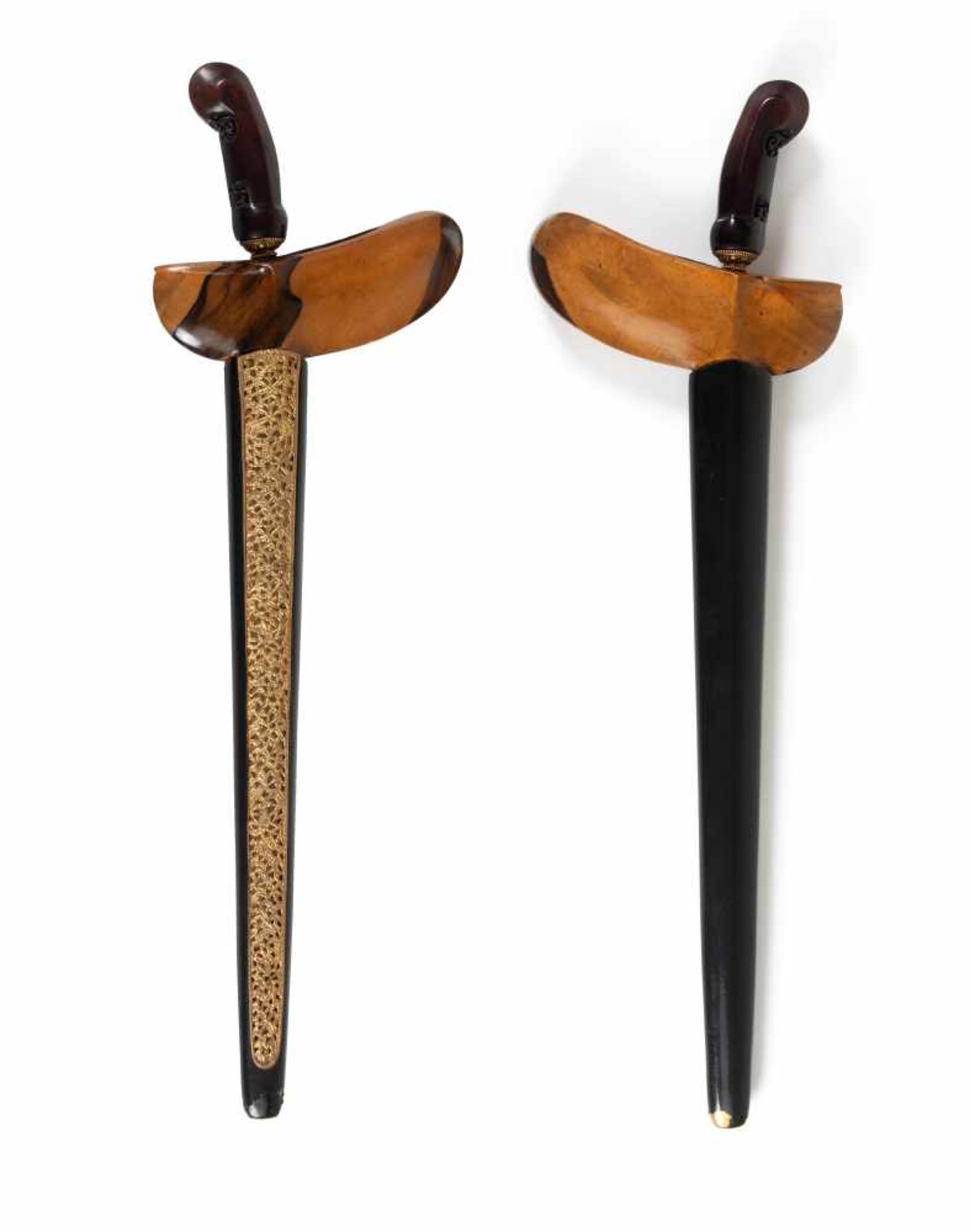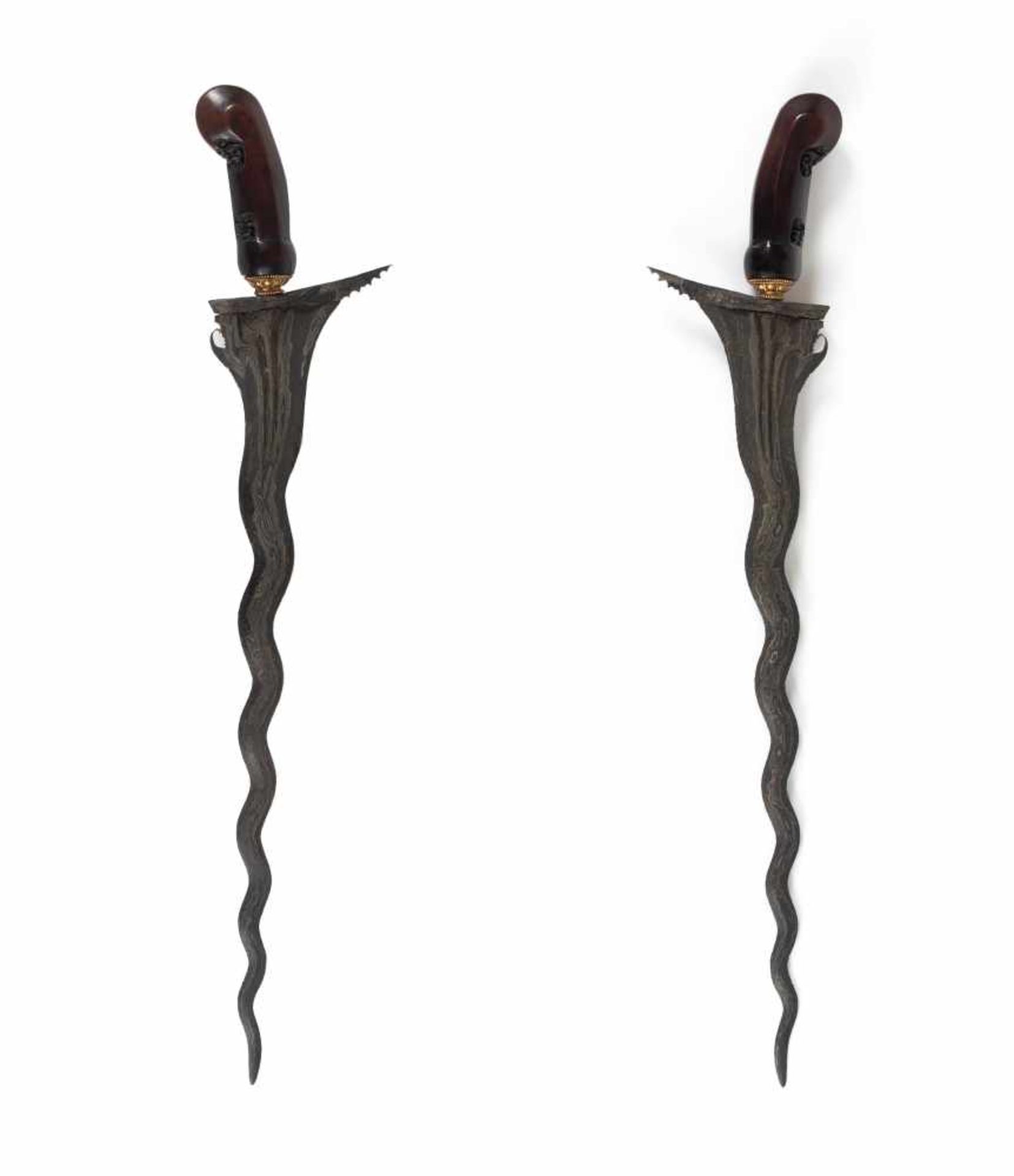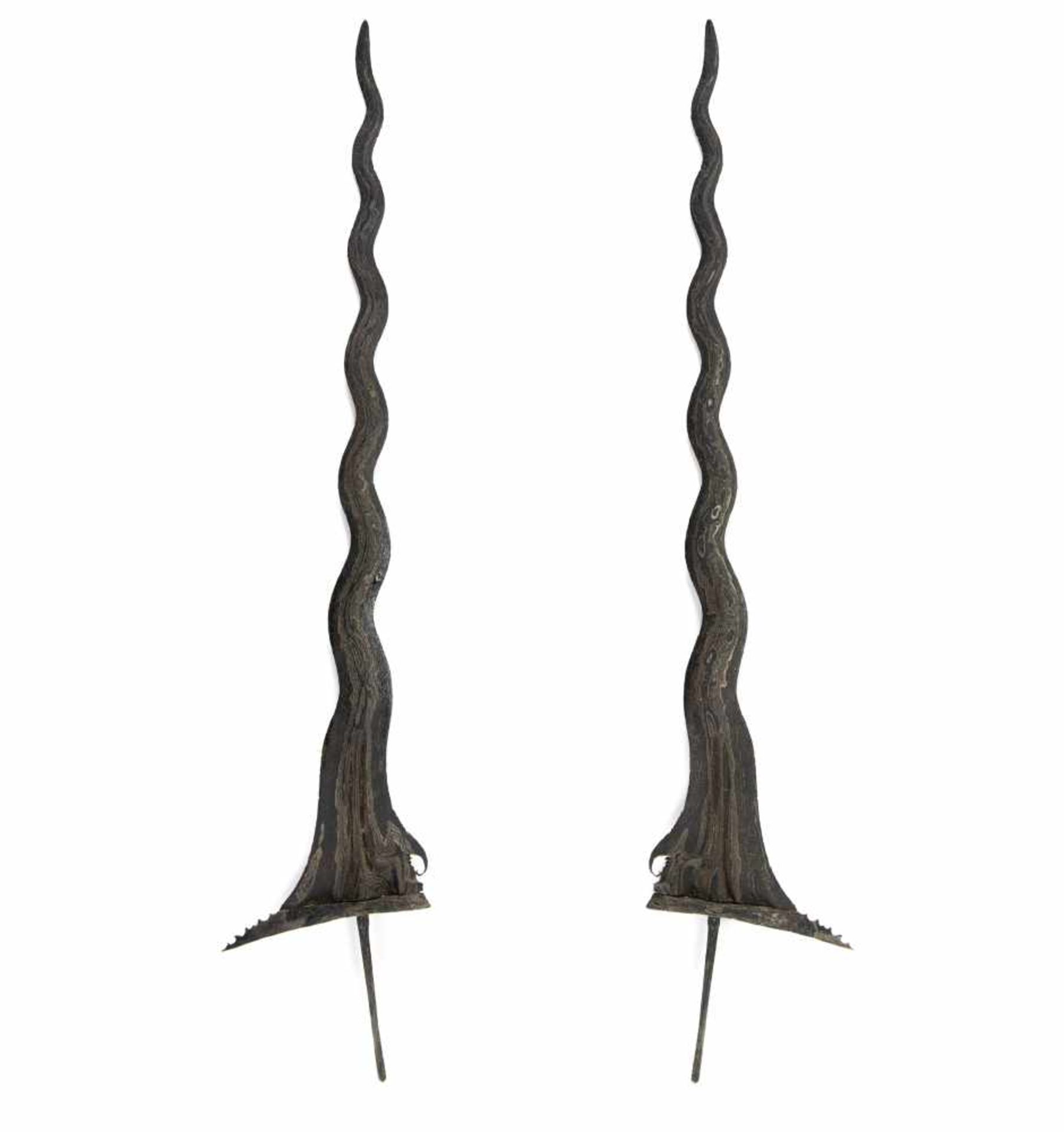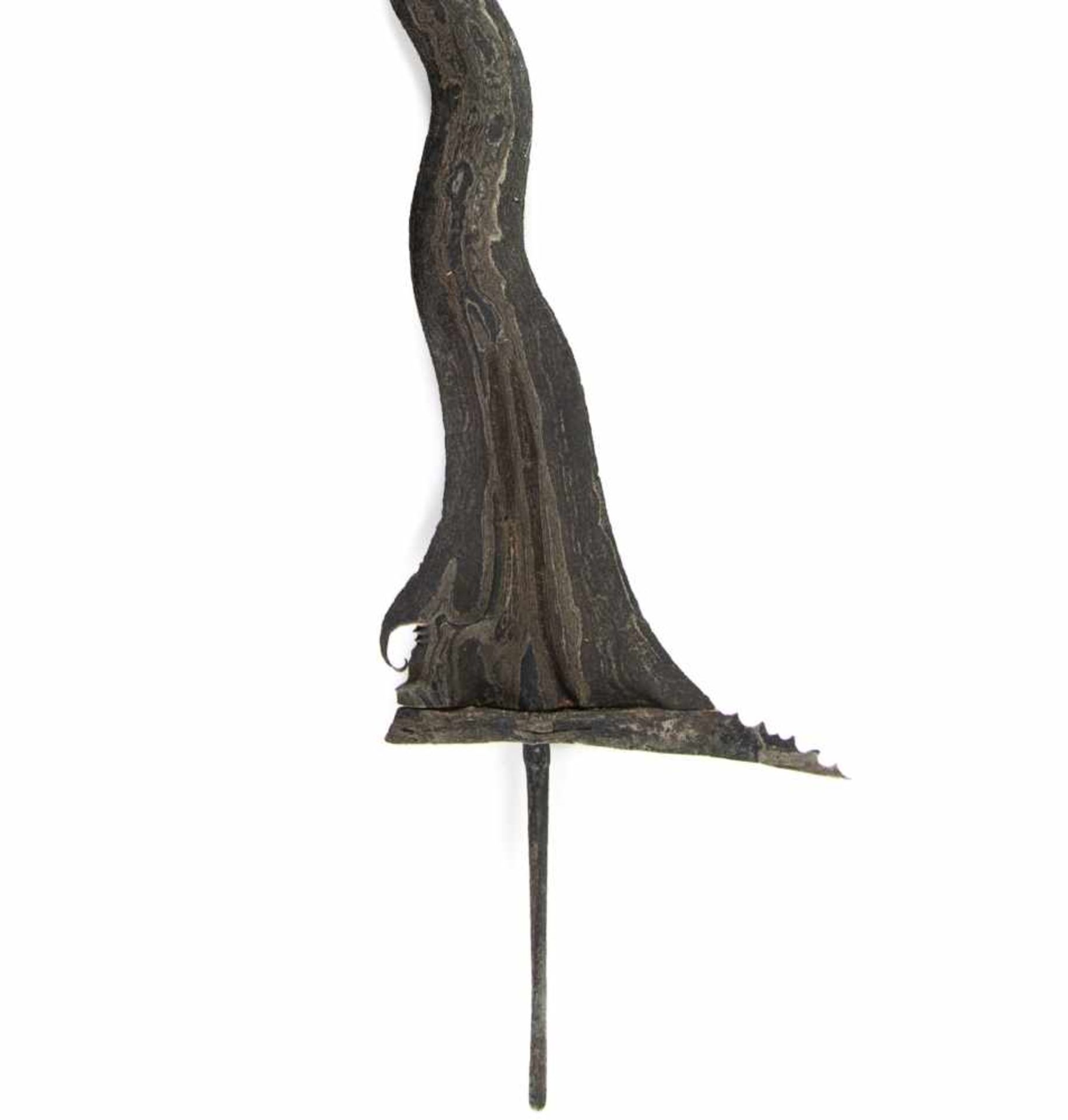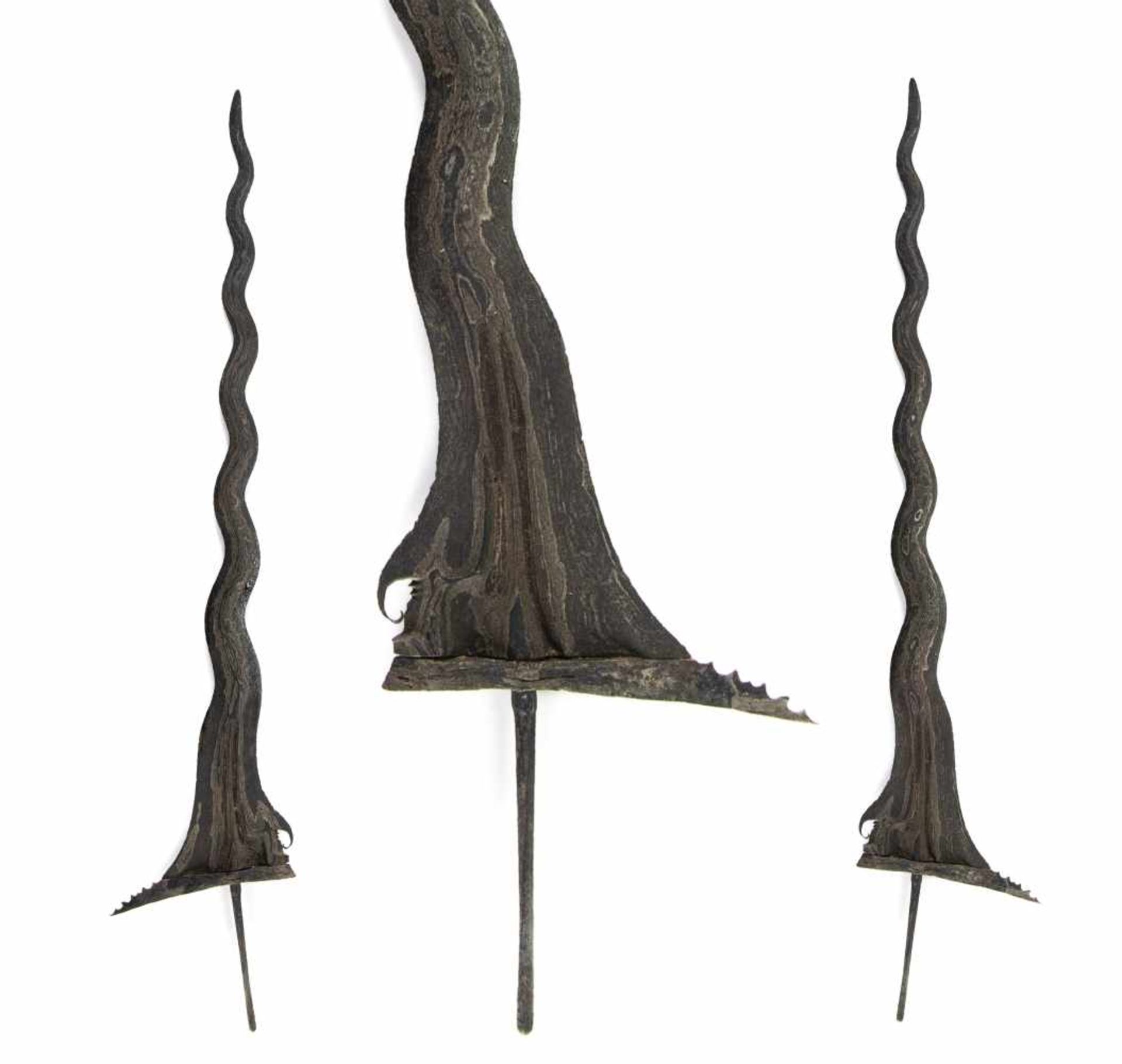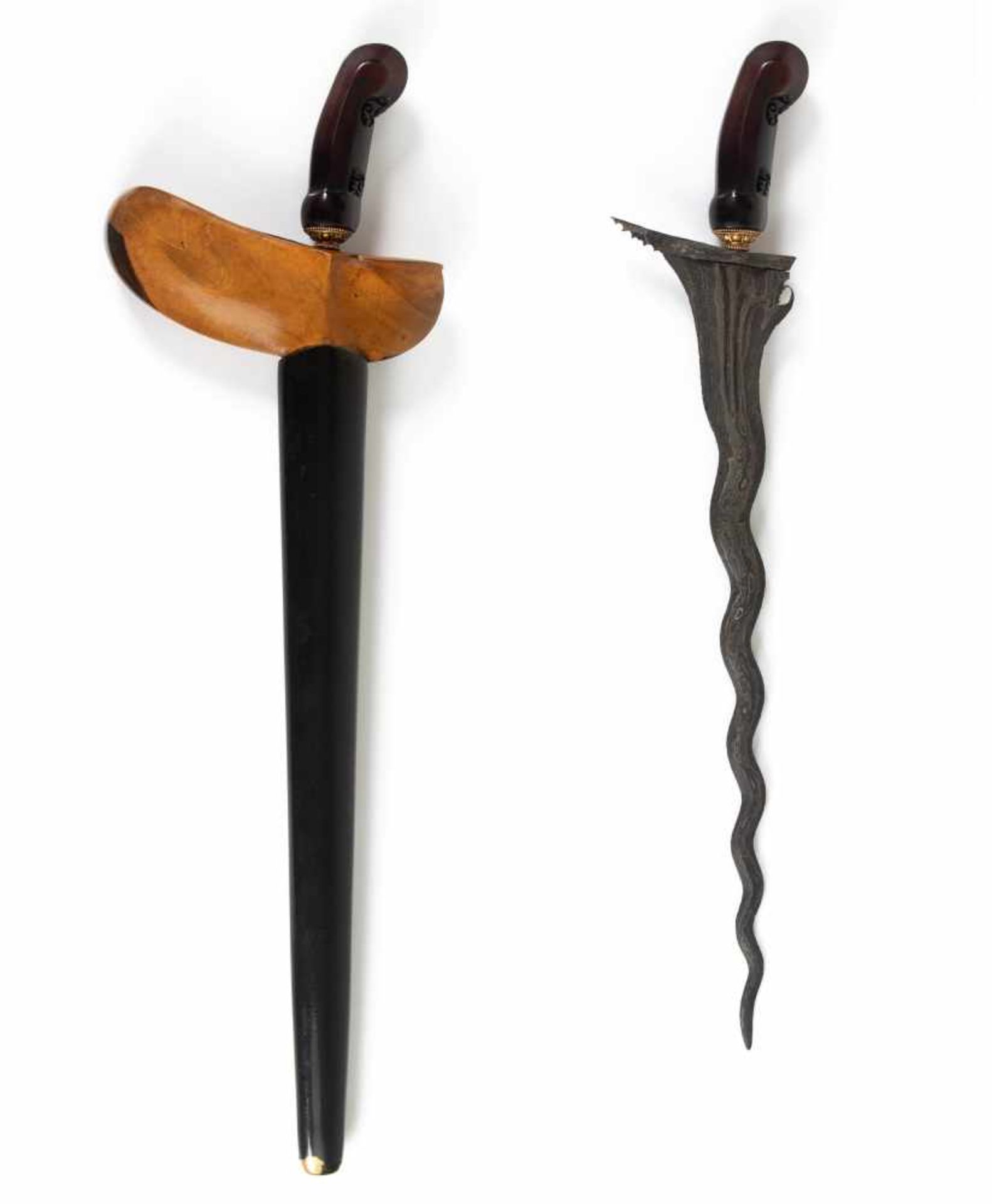54
A Javanese Keris Yogya, with mid-17th century blade.A Javanese Keris Yogya, with mid-17th century
1/7
Das Auktionshaus hat für dieses Los keine Ergebnisse veröffentlicht
7741 EK Coevorden
Beschreibung
A Javanese Keris Yogya, with mid-17th century blade.
A Javanese Keris Yogya, with mid-17th century blade.
Umur (age): From the Regency of Amangkurat I, Sultan of the Sultanate of Mataram.
The Keris with a hand forged ‘13 Luk’ waved Wilah (blade), consists of Pamor steel forged in different layers of iron (pattern type: ‘Beras Wutah Mlinjon’). Dapur in ‘Sangkelat’ (= Elephant trunk shape). Gilded copper Mendak (cuff) of ‘Parijoto’ type, between hilt and blade. Ukiran (Keris hilt) in ‘Deder Taman Ngabehan’ shape, and carved from Tayuman wood. Warangka (sheath) of ‘Gayaman Taman Ngabehan’ type (‘kidney’ shaped) and made from Pelet Mbelang Sapi wood patiently carved by hand. Gandar (body) (body) with black painted Kemalon Hitam Pendok (cover), silver gilded Slorok with Semen ‘Alas Alasan’ pattern.
Length of the blade, including ‘Pesi’ (tang of the blade): 41.1 cm. (1x)
Note 1: Amangkurat I was sultan of Mataram from 1646 to 1677. He was the son of the powerful Sultan Agung. By the mid-1670s dissatisfaction with the Sultan turning into an open revolt. The Sultanate of Mataram was the last major independent Javanese kingdom on Java before the Dutch colonized this island. It was the dominant political force radiating from the interior Central Java from the late 16th century until the beginning of the 18th century. By the mid-18th century, Mataram lost both power and territory to the Dutch East India Company (VOC). From there on It became a vassal state of the company by 1749.
Please also notice: The sale, purchase and possession of arms are subject to national laws and regulations. Please ensure that you are familiar with the laws and regulations of your country BEFORE placing a bid. It is forbidden to sell weapons to persons under the age of 18. By placing a bid, you declare that you are 18 years of age or older and that you have verified that you are allowed to legally buy such items in your country.
Auktionsdetails
Versand
AGB & Wichtige Informationen
Stellen Sie dem Verkäufer eine Frage
A Javanese Keris Yogya, with mid-17th century blade.
A Javanese Keris Yogya, with mid-17th century blade.
Umur (age): From the Regency of Amangkurat I, Sultan of the Sultanate of Mataram.
The Keris with a hand forged ‘13 Luk’ waved Wilah (blade), consists of Pamor steel forged in different layers of iron (pattern type: ‘Beras Wutah Mlinjon’). Dapur in ‘Sangkelat’ (= Elephant trunk shape). Gilded copper Mendak (cuff) of ‘Parijoto’ type, between hilt and blade. Ukiran (Keris hilt) in ‘Deder Taman Ngabehan’ shape, and carved from Tayuman wood. Warangka (sheath) of ‘Gayaman Taman Ngabehan’ type (‘kidney’ shaped) and made from Pelet Mbelang Sapi wood patiently carved by hand. Gandar (body) (body) with black painted Kemalon Hitam Pendok (cover), silver gilded Slorok with Semen ‘Alas Alasan’ pattern.
Length of the blade, including ‘Pesi’ (tang of the blade): 41.1 cm. (1x)
Note 1: Amangkurat I was sultan of Mataram from 1646 to 1677. He was the son of the powerful Sultan Agung. By the mid-1670s dissatisfaction with the Sultan turning into an open revolt. The Sultanate of Mataram was the last major independent Javanese kingdom on Java before the Dutch colonized this island. It was the dominant political force radiating from the interior Central Java from the late 16th century until the beginning of the 18th century. By the mid-18th century, Mataram lost both power and territory to the Dutch East India Company (VOC). From there on It became a vassal state of the company by 1749.
Please also notice: The sale, purchase and possession of arms are subject to national laws and regulations. Please ensure that you are familiar with the laws and regulations of your country BEFORE placing a bid. It is forbidden to sell weapons to persons under the age of 18. By placing a bid, you declare that you are 18 years of age or older and that you have verified that you are allowed to legally buy such items in your country.
The Van Steenwyck Collection /Art & Antiques
Auktionsdatum
Ort der Versteigerung
Stationsstraat 36
7741 EK Coevorden
222
Netherlands
Für Duveen Veilingen Versandinformtation bitte wählen Sie + 31 (0)6 53 32 86 80 .
















